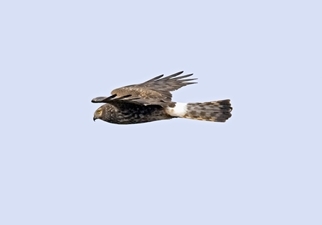 This morning the government published its Hen Harrier Joint Action Plan. The GWCT, which has been deeply involved in the reconciliation of wildlife conflict between hen harriers and red grouse for over 30 years, welcomes this significant milestone and we are looking forward to its implementation.
This morning the government published its Hen Harrier Joint Action Plan. The GWCT, which has been deeply involved in the reconciliation of wildlife conflict between hen harriers and red grouse for over 30 years, welcomes this significant milestone and we are looking forward to its implementation.
The six point plan, developed by Defra (in conjunction with the RSPB, GWCT, Moorland Association, National Gamekeepers’ Organisation and the National Parks) will be led by Natural England to:
1. Monitor hen harrier numbers in England and the UK via satellite tagging and tracking;
2. Share best practice with land managers and gamekeepers, encouraging the provision of food for birds of prey;
3. Work closely with the Raptor Persecution Priority Delivery Group (RPPDG) to analyse intelligence on persecution and deliver more effective enforcement and deterrence measures;
4. Monitor and protect nests and winter roosts from disturbance and destruction;
5. Work with landowners to reintroduce hen harriers to suitable areas in the South of England;
6. Scope out feasibility for trialling brood management
Obviously there is still some uncertainty about how this is all going to work in practice and that is understandable. Some may find it hard to support aspects of the plan. The GWCT has concerns about reintroduction, particularly with genetic integrity, if the birds come from France, and a possible failure to meet IUCN basic reintroduction parameters.
Others, for example, have concerns about the brood management trial and feel it should only be considered once hen harrier numbers have recovered, whereas GWCT sees it as ‘remedy’ that unlocks the impasse the conflict creates, in other words a precursor to allowing hen harrier numbers to recover.
Please let us know what you think: